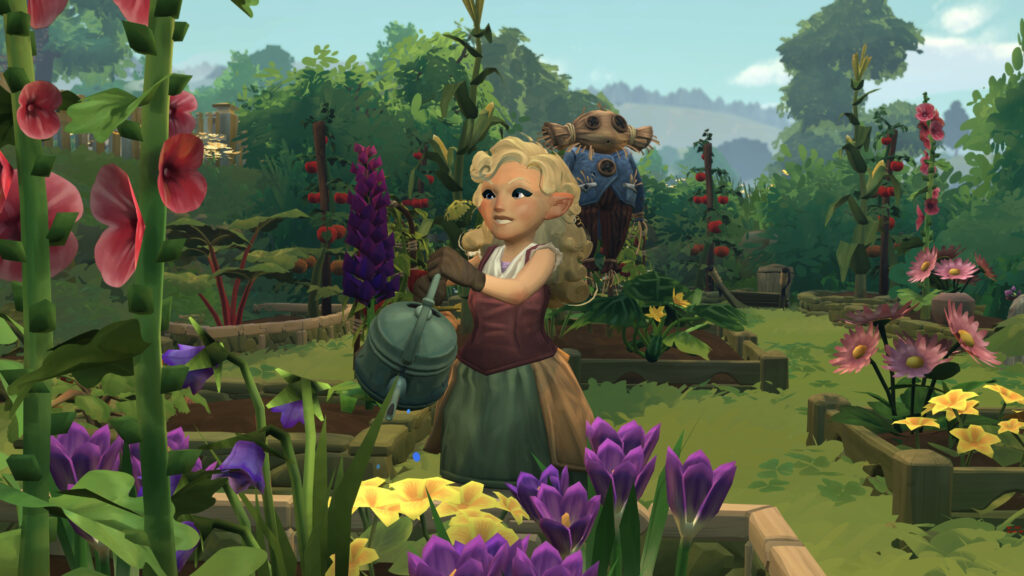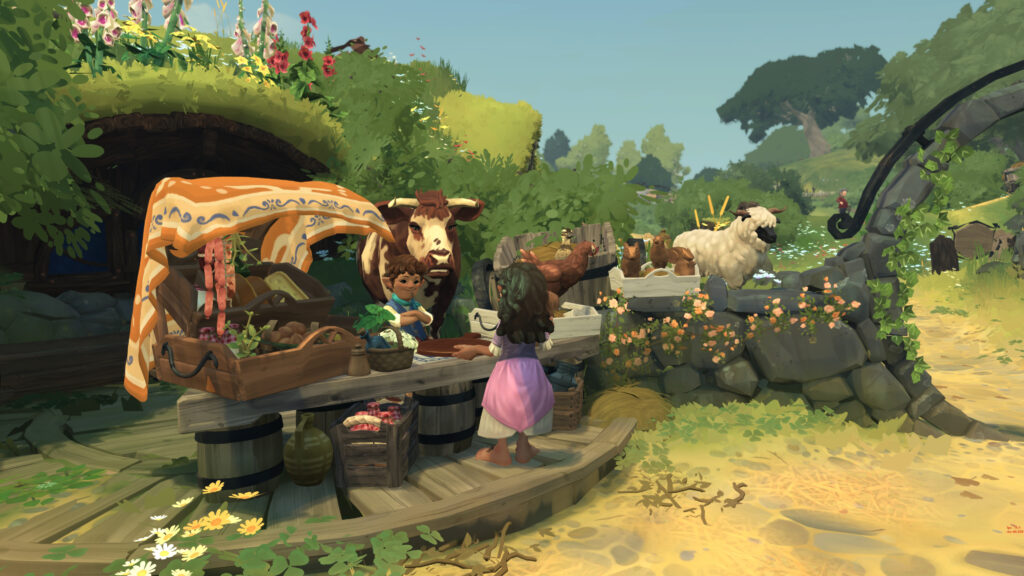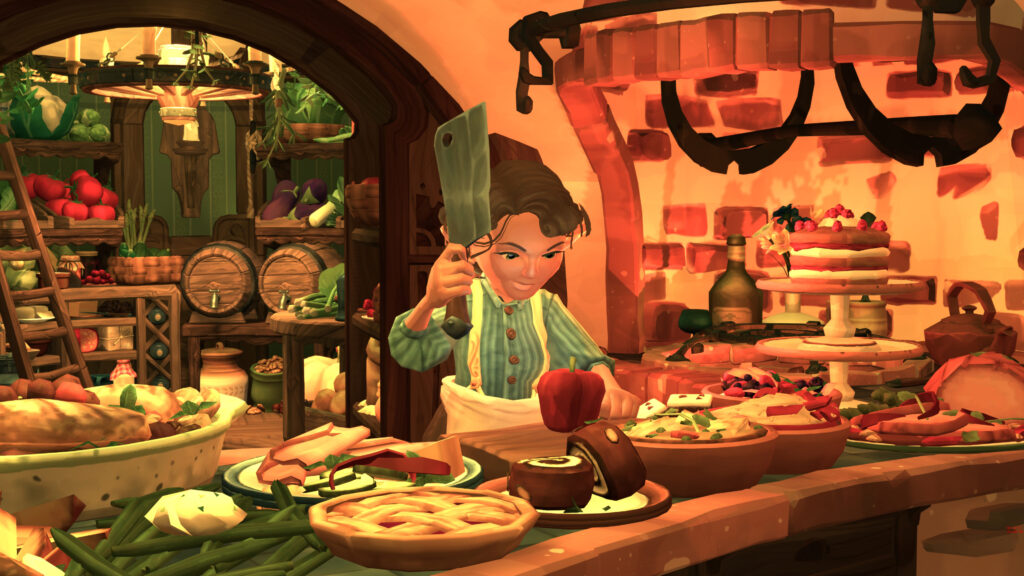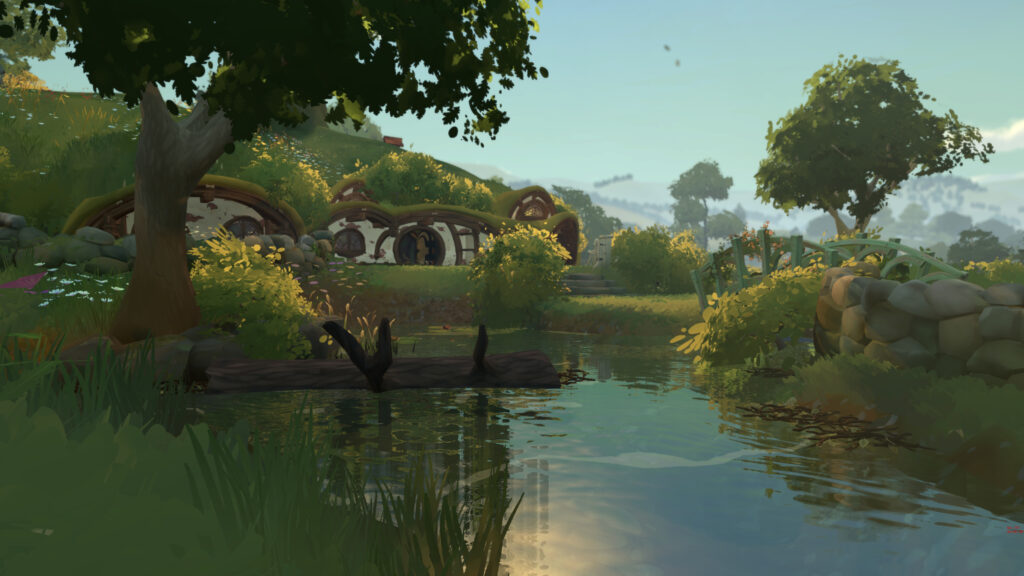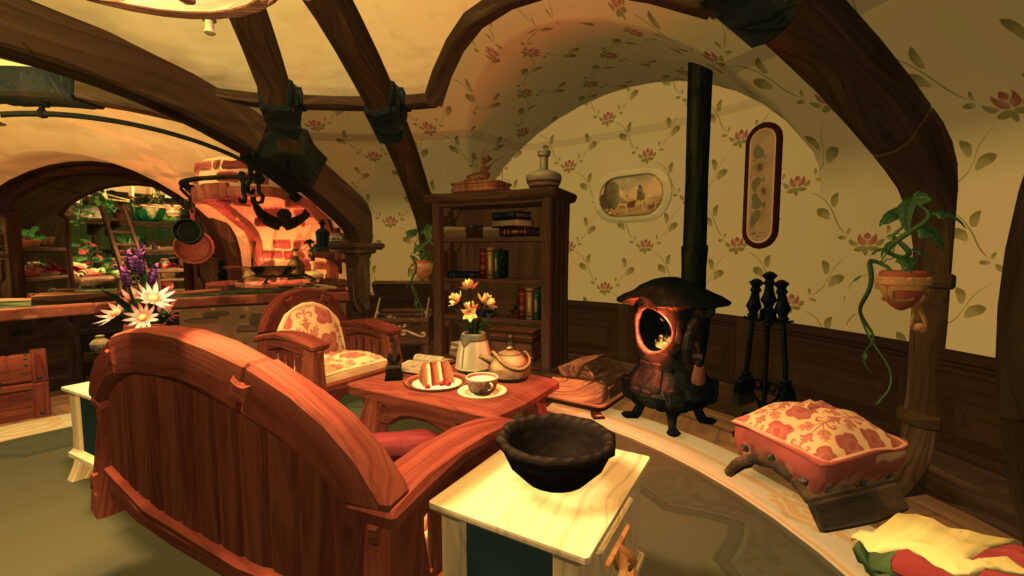Coming soon to consoles, mobile, and PC, Tales of the Shire introduces a new vision of J.R.R. Tolkien’s beloved Hobbit landscape as a cozy, comfortable place to return to in a more personal interactive way.
TheOneRing.net’s Justin and Kellie recently caught up with the producers on Tales of the Shire, and you can read her report here. The game is being developed internally at Wētā Workshop in New Zealand and published worldwide by Private Division. After the recently released first-look trailer, fans wanted to know more how about this project came about, and why the Oscar winning design studio decided to start making games based on The Lord of the Rings.
Justin: Thank you for chatting with TheOneRing.net. Please introduce yourselves to the fans!
Morgan: I’m Morgan Jaffit. Executive Producer on Tales of the Shire.
Calliope: And I am Calliope Ryder, the lead producer on Tales of the Shire.

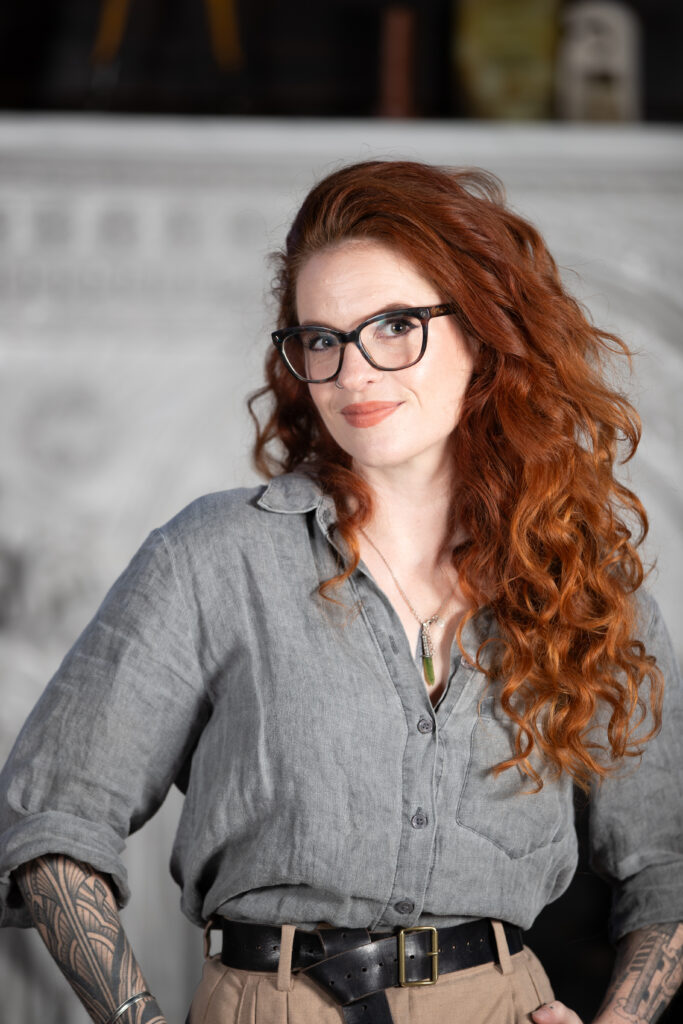
Building on the Legacy of The Lord of the Rings
Justin: Talk about the legacy of Wētā Workshop. You’re making a video game, but there’s a whole legacy of building a world class Shire on film and in physical spaces in Matamata. So where do you even start with a new form of adaptation?
Calliope: We are very fortunate that a lot of people on the team have been working in, well sort of living in, the Middle-earth environment for quite a long time. There’s our art director who worked on The Hobbit and actually many people on the team who’ve worked in concepting in departments on various Lord of the Rings things. It’s sort of a natural extension of what has happened in the past, but with a really new brushstroke. Sort of a fairy tale lens, everything is rose tinted: how can we make this Shire a really, really cozy place? How can we sort of give a new visual expression of what Wētā has done, like leaning on the experience that we’ve got, to make something that looks unique but is still very clearly of Middle-earth?
Morgan: It just runs through the veins of every Wētā Workshop project. Dan Falconer is just up the road. And when Darren, our narrative lead, says, “I wonder about this? Let’s ask Dan.” Dan wanders down and gives this insight during a build review. Fans all know Richard Taylor, who has the finest eye for visual detail that I have seen in a human, and has lived in this world forever. He will look at something and say, “No, the way that sword hangs is incorrect! We need to make a nine-degree change to the tilt of the tip of the sheath.”
That sort of detail and that sort of precision is there every day. It’s there in focused ways, in members of the team, and it’s there in just the framework of the organization that we draw on. It’s the people working it through every day. I’ll look around and think, that person knows more about this than anyone else in the entire universe. It’s been a real privilege to be involved in that.
Calliope: I think it’s pretty rare for a studio to make this commercial game and have access to so many experts in so many different fields. Morgan mentioned the leather working thing earlier, but across the board is just so much wealth of knowledge to draw from every direction.
Morgan: Plus, there is support and elevation for excellence. I actually don’t think you can get to excellence through pressure. You can only get there through support, camaraderie, and teamwork. It’s a muscle they’ve been training every day. And it’s a filter as well. When you know Daniel Falconer or Richard Taylor comes by and says, “Oh, this is what would make it better,” — they tend to be right. So we need to go make it better. It’s all very easy while also being the hardest thing in the world.
Justin: Speaking of this team of experts, what do the demographics look like on the development team?
Morgan: There’s a good and diverse team making the game. Except for the fact that it’s overwhelmed with New Zealanders!
Calliope: Actually, I would say Commonwealths, so lot of Kiwis and a lot of Australians. We’ve got a few Brits. We’ve got a Canadian, specifically a New Zealand Canadian expat. It’s changed quite a bit lately, and like all game studios, it ebbs and flows. I’m sort of the person on this project where if a question comes up for a particular thing, they are told to ‘make Cal happy’!
Justin: How did Wētā Workshop decide to start making games, and building out a game development team?
Calliope: Before my time, Wētā Workshop was working on an augmented reality project for a game based on our own IP, Dr Grordbort’s: Invaders – however this was never released. So there was already the foundation for making tech, making video or experimental tech, and video games and gamified experiences. When the project ended, we still had a bunch of devs around and accessible to us. So they got to work trying to figure out what the next step was. Making something that was a bit more easily accessible for a wider audience was a pretty high priority.
Morgan: I think the Wētā DNA is: have amazing people, look at how to apply them to problems that haven’t been solved before, and find people who want to partner up and do things right. I think they have a game studio because that was the right solution to the question of what to do with amazing people. It’s sort of a symbiotic relationship when you talk about the growth. There’s this push and pull, and I think part of the reason that we’re seeing gaming success in New Zealand is from the sorts of things that are going on, as well as a quicker development time for work. Yeah, it’s just a really great ecosystem.

Justin: With the two different companies collaborating on this game, how have you divided the work between Wētā Workshop and Private Division? What does that relationship look like?
Morgan: It’s a really traditional publisher-developer relationship, with a slight difference. It wouldn’t be unusual for a publisher to have an IP like Middle-earth with a game in mind, where they were talking to developers and getting developers lined up. But obviously Wētā Workshop itself has a long relationship with Middle-earth Enterprises. So Wētā Workshop went to Private Division and said this is a game we really want to make. Private Division said we think that’s a great idea. They’ve helped with resources, marketing support, and distribution. They’ve been really great partners from a production standpoint and helping to manage. There are an enormous amount of different wheels to turn to get a big game made. But when it comes to the game, when it comes to what goes into the game, that is all Wētā Workshop. The team are on site (or in some cases remote), but it’s Wētā people, making a Wētā game, the Wētā way, and working with Private Division to get that out to the world.
Calliope: One of the really good things about Private Division, when you look through their portfolio of previous titles, is that they place a really high value on artistic expression and creatives. I think that’s a pretty good match for us because if there’s anything that we want to do really well, and own more, it’s the artistic expression of the Shire.
Making Games in New Zealand
Justin: It seems like there’s a huge game development scene in New Zealand, with the CODE program where the government supports game developers with funding.
Calliope: I have to give credit where credit’s due. CODE Center of Digital Excellence is a government funded grant program with the aim to start more indie gaming studios in the region. Just being in New Zealand, we’re a long way away from GDC and the rest of the world. Obviously with COVID the climate’s changed a bit, but it’s hard for us to pitch new games. It costs a lot of money to go to gaming industry events for people who don’t have backing. With CODE starting things up in Dunedin, and now nationally across New Zealand, it had this huge boom and a lot of gaming devs are now doing really well. It feels very nice for gaming to finally be recognized. For a long time, games were kind of lumped into sports, which we’re not, then we were always lumped in with the screen (filmmaking) initiatives, which we are not. So it’s really nice to feel like gaming is being recognized by and supported by the New Zealand government to bring New Zealand’s game development scene up.
Justin: Did this NZ indie gaming scene influence the creative decision to make a small cozy game, versus making a AAA-level game right out of the gate?
Calliope: I mean, for us, we have to sort of be a bit realistic, right? It would be incredibly hard to go from no game experience to a AAA game. We had to figure out what’s right for Wētā Workshop. What can we make to give back to the world? What can we make that is something that we really want to work on?
Morgan: It really was Wētā Workshop driven. Way more organic than you think. It’s an organic place. Just have the world’s best people, and then work out the problems with chewing gum. I mean, that is the sense I get from Richard and Tanya, and the rest of the crew all the way down.
The other thing I’d say is that, you know, we are aware that this is a game that different people will turn up to for different reasons. And it’s really important to us that all of them are welcomed with open arms and given the sort of experience that they want to get out of it. In terms of motivations, and in terms of demographics, that’s really how we’ve been thinking about it from the opening. But it’s also a part of the reason that, you know, Cal’s been such a great lead for this project – because she lives in that world, as do the other women on the team. Which is really important.
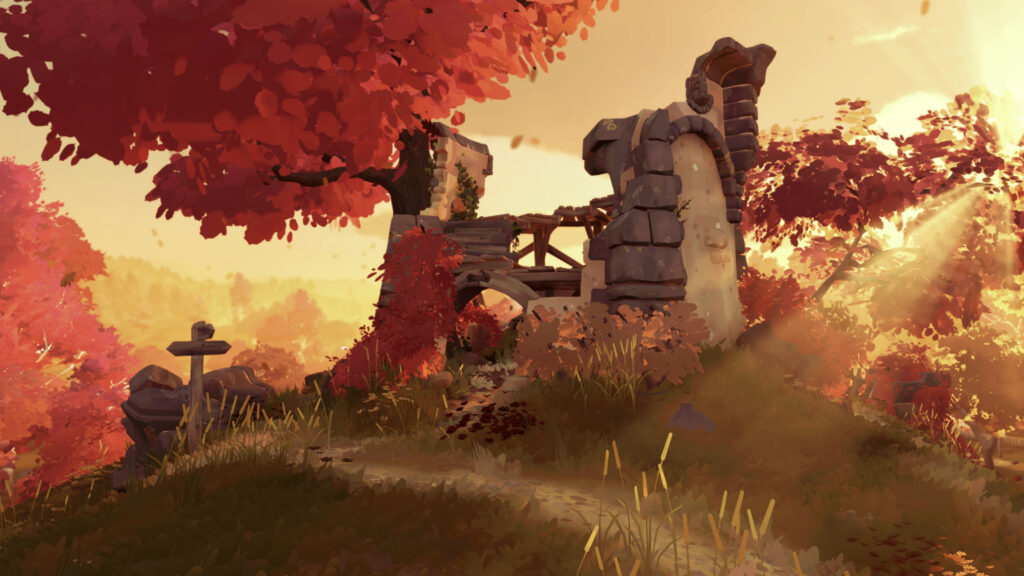
Justin: How much of pressure is there to be excellent at creative output? Is there pressure coming from the legacy at Wētā Workshop, that you’re building upon?
Calliope: What pressure? (sarcastic laugh) We recognize the opportunity that we’re given to build this game. We recognize – and we love – that we really care for the lore, we care for the IP, we really care for Middle-earth. We are a studio that is growing within a much older legacy of excellence, especially artistic creative excellence. I don’t think you could be at Wētā Workshop and not make an incredibly beautiful project, and hold yourself to the standard that you see around you every day.
What games the developers are playing
Justin: What are some of your favorite games? What do you play?
Calliope: This is not particularly cosy in this case, because in a way, I love Frostpunk, I adore Frostpunk. I can’t wait for number two to come out. I think there’s something that is actually really cosy about storms, winter, deep dark. The existence of a really harsh environment sort of creates that cosy feeling. I’ve been playing a little bit of Dreamlight Valley. I love games like Firewatch. I like tourism games, right? Like games where you get to explore, not so much action adventure, but in not quite walking sense, but just exploring beautiful environments.
Morgan: I’m ancient, so my tastes fossilized 100 years ago. Favorites would change from one day to the other, but Dungeon Master or Ultima IV. Space trading game Elite was very, very impactful on me, it had a huge impact. Device 6 is a mobile game by the studio that did Year Walk. Device 6 is like the old British television series Prisoner of War, which is kind of a surrealistic 60s mod text adventure on mobile, that’s just super my jam. I’m playing tons of Marvel Snap recently because I move around a lot and have kids. I love the first Arkham game. I think it represents a really significant point in the way development changed from one place to the other. System Shock 2 is hugely influential on me, and the Ultima Underworld games were remarkable at the time as they kind of exposed what 3D systemic gaming could be. I’ve always had a soft spot for everything that’s come out of the Looking Glass alumni. Deathloop is probably the most recent.
Justin: Helldivers 2 has really captured the imagination of everybody, because of the co-op and the fact that developers are like, “We’re leaving something in the game just because it’s fun.”
Calliope: For that type of game, it’s one of the more approachable ones that I’ve experienced, right? There’s some games that I play for social, and that’s games like Helldivers. And that’s because it feels good to do things with friends. Then there’s games where the purpose for me is to settle down, to have a nice little list that I can check off every day. I go around and do mining and watering different things, and Dorfromantik is one that I’m obsessed with, and keep returning to relax as a therapeutic game. Obviously Stardew Valley I’ve put an inordinate amount of time to – more than I put into Skyrim, and that’s saying something.
Justin: How do you manage that balance of adding things that are fun to play, but maybe are not accurate to the lore?
Morgan: I don’t think anywhere that I can think of where we had a fun-versus-lore question. I’m not saying it couldn’t happen, it just hasn’t. We’ve been committed from early on to a pretty high degree of verisimilitude but because of that, we are grounded. We are in the world of the lore. I don’t think anybody’s been like, I’d love to have a flamethrower mini game.
Calliope: *laughs* But a Balrog rising mini game could be fun!
Morgan: We understand that the interface layer and the in-game layer are separate. You wouldn’t have a backpack to put things in, but with tiny little boxes as a UI concept. That’s not a breach of lore issue. The people who know the lore are regularly like, “But NO!” about certain things, but not about fun game mechanics. When we look at fun ideas, like what if we had those type of characters turn up? Lore team would say, “No, those peoples are documented to have never come to the Shire. So, no you can’t!” It’s that simple.
We try to be consistent with the lore at all times because somebody is going to find an example and make our lore guys sad, but we are very consistent. We’re very, very conscious of it but it’s never felt like a restriction. There’s plenty of places to color in, plenty of places to enrich, and plenty of richness from the page.
Justin: What’s the primary platform: Switch, Xbox, Playstation, or PC? Can you talk about the expected lifecycle of the game?
Morgan: All the ones! We have no favorite children. We have developed and designed from the very beginning with an integrated experience on PC and very great experience on consoles. We expect people to have a long and enjoyable experience with this, and we expect to have a long and enjoyable experience ourselves.

Postscript: NETFLIX just announced that Tales of the Shire is coming to iPhone and Android via Netflix Games.
That’s it for our Tales of the Shire Producer Q&A! Also check out Kellie’s report on the creative process of the game here. Pre-order or wishlist the game at all the usual places, and prepare to settle into some cosy🇬🇧 or cozy🇺🇸 gaming later this year.



